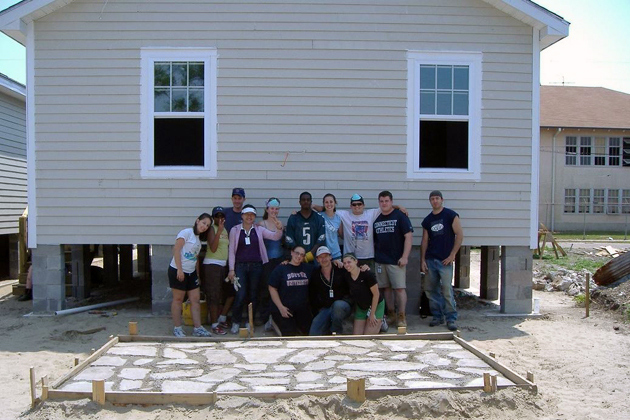
Imagine someone of European descent strolling through a park in a predominantly African American neighborhood at night. The individual may have a liberal attitude toward race and may strongly feel that all people are equal.
Yet when six African American teens walk toward him, he might involuntarily take a deep breath and worry about what is going to happen.
And even if he and the teens sit down on a park bench to talk, there is that one moment of fear. And then there is that moment of embarrassment: “Am I racist?”
That is the question Thomas Craemer, associate professor of public policy in the College of Liberal Arts and Sciences, is investigating, using reaction-time tasks that tap people’s racial attitudes at the implicit level, even when respondents are unwilling or unable to report them.
His findings are as complex as the scene in the park. “Race clearly matters,” he says.
But it appears to matter in more than one way. Measured at the implicit level, pro-black attitudes appear to coexist with anti-black bias among the same respondents at the same time.
Not only white respondents, but also many African Americans and respondents of other backgrounds display an anti-black reaction-time bias in his experiments. One possible interpretation is that “we have been culturally trained in our responses,” he says.
But Craemer also finds pro-black attitudes at the implicit level. He uses a measure of cognitive ‘self-other overlap’ that indicates how much a respondent identifies with African Americans. While African American respondents score highest on this implicit measure, many white respondents, and respondents of other backgrounds, also appear to identify with African Americans.
The ability of people to identify across racial lines gives Craemer reason for optimism, he says, especially since pro-black identification appears to be among the strongest predictors of policy support.
Yet his optimism is qualified by evidence of ingrained cultural bias and remaining structural inequalities.
Nowhere are these remaining structural inequalities more pronounced than in New Orleans after Hurricane Katrina. Every year since 2007, Craemer has led students to New Orleans to volunteer for relief and reconstruction and to study government responses to the crisis.
What he and his students found was curious – significantly fewer Federal Emergency Management Agency (FEMA) trailers in predominantly black areas compared to predominantly white areas with the same level of devastation.
The distribution of FEMA trailers was, in part, influenced by local decisions about where to restore water and electricity. These decisions were made by a city government where African Americans are in the majority.
“It was well within the jurisdiction of local government to return services to the Lower Ninth Ward earlier,” Craemer says. Yet the city government restored services to this severely affected neighborhood – home to mostly African Americans – last.
“Structural factors dating back to the eras of slavery and Jim Crow can explain why poor African Americans were concentrated in low -lying areas with higher risk of flooding,” he says. “But what explains racial disparities in government response to a natural disaster? One possibility is that culturally shared racial biases may interact with other structural and political factors to create the observed discrepancies.”
While structural legacies of slavery and segregation are still with us, and racial stereotypes still influence our thinking, there are also signs of progress, Craemer says. “In my lifetime, I never expected to see a president elected who identifies as African American.”



